Relays, Contactors and solenoids serve as the on/off switch for your winch. Without it, you’d have to hotwire a winch to turn it on, and even then, you wouldn’t be able to control it properly. It is not recommended because your winch’s drum will continue to rotate uncontrollably.
But before we get into the debate of winch contactor vs solenoid, let’s start with the fundamentals. We must first investigate another switch known as a relay before we can comprehend contactors and solenoids.
What is a relay switch?
A relay, one of the most common electromechanical switches in a vehicle, allows a low-power signal (typically 40-100 amps) to control a higher-powered circuit. It can also control multiple circuits with a single signal, such as in a police car, where a single switch can activate a siren and numerous warning lights at the same time.
Relays[1] are available in a variety of designs, ranging from electromagnetic relays (which use magnets to physically open and close a switch to regulate signals, current, or voltage) to solid-state relays (which use semiconductors to control power flow).
Solid-state relays are more reliable and have a longer service life because they have no moving parts. Solid state relays, unlike electromagnetic relays, are not susceptible to electrical arcs, which can cause internal wear or failure.
Here are some examples of relay switch configurations:
- Mini ISO Relays: it is basically an all-purpose switch that is used as a blueprint in the automotive industry. In a nutshell, it’s the most primary you can get. It is well-suited to a wide range of electrical vehicle applications, including lighting, starting, horn, heating, and cooling.
- Micro Relays: It is a miniature plug-in design that follows a universal standard pattern for electrical terminals and is intended for use in the automotive industry. A micro relay is useful for all switching operations ranges that require more than 35 amps.
- Maxi Relays: As the name implies, these are stronger versions of micro relays. A maxi relay functions similarly to a micro relay, but it is designed for heavy-duty applications. They work well in cooling fans, engine management, fuel control, and car alarms.
- Mini, Ultra, and Micro ISO 280 Relays: As its name appears to be exaggerated, it is a more compact version of standard relays. It adheres to the pin size and design of an ISO 280 footprint. These relays can be found in ATM fuse boxes and power-distributing units.
What is a contractor?
When a circuit is required to support an even higher current load, the contactor is the relay to use (typically 100-600 amps). Contactors, which have voltage ratings ranging from 12V DC to 1200V DC, are a low-cost, safe, and lightweight solution for DC high-voltage power systems. 77101.
Industrial electric motors that are used in heavy trucks and equipment, electric/hybrid vehicles, boats, light rail, mining, buses, emergency vehicles, and other systems requiring too much power for a standard relay or solenoid are common applications.
Contactors[2] typically include an integrated coil economizer to reduce the amount of power required to keep the contacts closed, which improves system flexibility and reliability. They are frequently available with additional contacts as an option.
What is a solenoid?
Solenoids can be called a different variety of relay switches. However, it is particularly designed to remotely switch a higher current—typically ranging from 80 to 200 amps. These relays, unlike smaller electromechanical relays, use a coil that, in turn, generates a magnetic field when a current passes through. When this happens, it opens or closes a circuit.
The same is true for winch solenoids[3], which work like a switch for your winch. Solenoids ensure the supply of the necessary current to the winch. As a result, any damage to the motor is avoided.
When a winch is activated, current flows from the battery to the solenoid and your winch is now operational. After the winch is activated, the current is shipped away from the engine via the solenoid to start the winch engine. A standard winch has two isolated solenoids, one for forward and another for reverse movement.
Things to keep in mind
In terms of capabilities, relays take up the bottom of the list, then the solenoids in the middle, and finally, contactors at the top. Contactors are more likely to handle the toughest jobs, but there are times when you don’t need that much power. Furthermore, contractors are the heaviest and most expensive option out of the three. Relays and solenoids, on the other hand, are comparatively lea expensive and easily portable.
Choose which one you require for the job. If you already have a heavy-duty winch, go with the contractor. But if a solenoid is sufficient, go with that option. However, there are factors on which the selection depends.
1. Current and Form Factor
Relays have the lowest carrying capacity, followed by solenoids, and contractors have the highest. Whereas the contactors can handle enough current to power heavy equipment, they are also the most expensive and take up the most space, whereas relays take up little space and are very inexpensive. Many solenoids at 85-200 amps are most likely to fall exactly in the middle of these two in terms of carrying capacity and price.
Consider the form factor when deciding which of these three switches is best for your design. Greater carrying capacity typically equates to a larger size, so carefully consider the amount of space available so that the device you require will fit in perfectly. If there is any difficulty, it is time to rethink your design layout or reduce the size of the electrical system.
2. Ambient Environment
Keep in mind the demands put forward by the environment in which the switching device will reside when selecting any switching device. A sealed product requires protection from elements such as humidity, submersion, dust, and vibration is required. To determine the specific protection provided, look at the Ingress Protection (IP) rating[4].
Another critical point is the operating temperature[5]. Because the engine and its surrounding components can generate extreme temperatures of up to 175°F, all adjacent devices must be rated accordingly.
3. Continuous vs Intermittent Ratings
It is essential to consider that contactors and solenoids can be used continuously or intermittently. Intermittent applications, like a starter switch, have a limited and short activation period followed by a longer rest period. If products are switched with a continuous rating, on the other hand, they can support applications that require continuous run time, such as winches.
One frequently asked question is whether a continuous-duty solenoid can be used instead of an intermittent-duty solenoid. While it is always recommended to use the component designed for the job, a continuous-duty solenoid could be used, but it is overkill. However, an intermittent duty solenoid should NEVER be used in place of a continuous duty solenoid because it is simply not designed to handle continuous demand.
Finally, Which one to choose ?
What happens if you get either of the two components? Will it have an adverse effect on the winch? Unfortunately, no. If you purchase a solenoid for your truck’s winch, you are limiting the capabilities of your winch.
Putting up a solenoid in place of a contactor is equivalent to limiting 90% of the current, which is a very inefficient method. You cannot afford to ignore which of the two is best for your winch. To determine which of the two is appropriate for your winch, we must first understand their differences and roles.
When it comes to capabilities, contractors are at the top of the list. The solenoids and relays are positioned in the second and third positions, respectively. The contractor is capable of handling heavy-duty jobs, but they are not always required. Without it, the contractors are the most expensive of the three options. In contrast, solenoids and relays are both inexpensive and inexpensive.
You must now decide which one you require. If you have a heavy-duty winch, you should use a contractor. Otherwise, if your winch is not heavy-duty, a solenoid will suffice. However, before selecting any option, ensure that it will fit in its designated location.
Summary
When these electrical components fail, a replacement or repair is required. If you ever need a replacement for your winch, what should you get? Which is it, a solenoid or a contractor?
There is no clear winner in the relay vs contactor vs solenoid battle; which of the two options is superior? Finally, it is determined by the user’s requirements.
Both have nearly identical characteristics, with the exception that one is more heavy-duty than the other. In short, a contractor is the best option if you are looking for a switch that can hold raw power. On the other hand, if you only need a small amount of power, a solenoid is the way to go.
References
-
Prasad, L. (2022). What is Relay? How it Works? Types, Applications, Testing. ElectronicsHub. https://www.electronicshub.org/what-is-relay-and-how-it-works/
-
Stykemain, A. (2023). What is a Contactor? | Working Principles. The Easiest Way to Learn Industrial Automation. https://realpars.com/contactor/
-
Solenoid 101: What is a Solenoid? | TLX Technologies. (2022b, January 21). TLX Technologies. https://www.tlxtech.com/articles/solenoid-101-what-is-a-solenoid
-
Linak. (2019, September 3). What is Ingress Protection rating and what does it mean? /Dist/Images/. https://www.linak.com/segments/techline/tech-trends/ingress-protection/#:~:text=Ingress%20Protection%20rating%20(or%20just,the%20European%20standard%20EN%2060529.
Winch duty cycle explained. « ABS Offroad Limited ABS Offroad Limited. (n.d.-b). https://absoffroad.com/winch-duty-cycle-explained-what-is-it-and-what-does-it-mean/
More on Winch
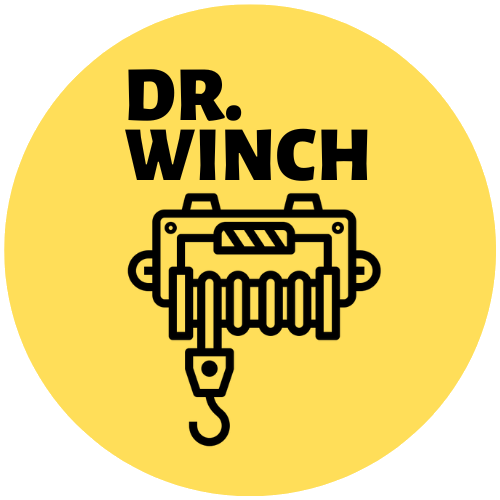

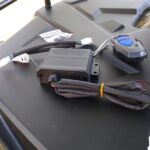
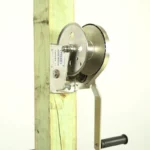
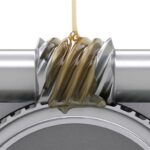
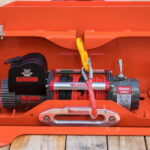
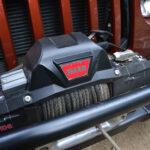
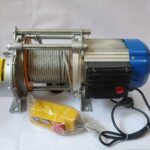
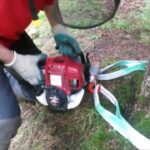
Hey Robert,
What product are you exactly looking for ? I can help you better if you can tell me which vehicle do you own